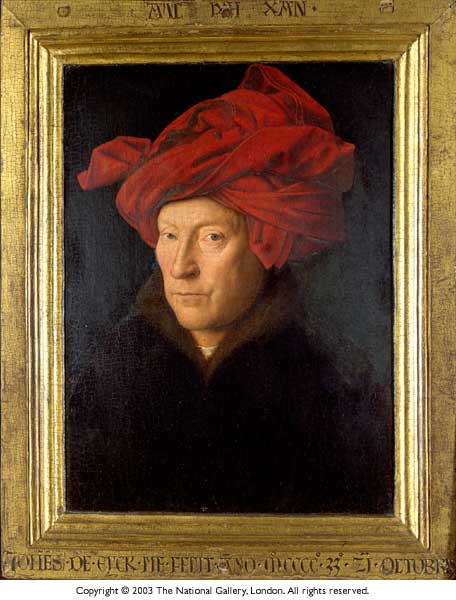The year is 1433. Jan van Eyck is dressed in a dark fur-trimmed jacket over a white jerkin, a splendid red turban perched precariously on his head. He stares solemnly at his own reflection, the better to paint it. But as he looks at himself sideways in the mirror he notices that it is impossible for him, at this oblique angle, to see both of his own eyes in focus. He includes this fact of optics in the picture. He paints one eye, his left, in the sharpest imaginable register: so sharp that the light from his workshop’s north-facing window can be seen gleaming wetly in the white of it; so sharp that its fine pink tracery of capillary veins can be seen; so sharp, even, as to make visible the slight marbling of the grey-green iris where it comes closest to the pupil. He paints the other eye, by contrast, to look slightly blurred, using a technique that anticipates, by more than four centuries, the innovations of the French Impressionists – a skein of dabbed and dashed paint. Life is seen through a glass, darkly. Vision is veiled by the truancies of sight.
The picture is mildly disorientating, because what it shows is not just van Eyck looking at himself but van Eyck looking at the nature of looking. It may well have been a self-advertisment as well as a self-portrait, made to demonstrate the skill with which he could handle oil paint, still a new medium at the time. So skilful was he that a rumour went round the Burgundian court that van Eyck was no mere painter, but a practitioner of dark arts. The red turban certainly lends him the air of a necromancer, but the picture is also shot through with palpable morbidity. The painter notes...

Self-Portrait: Renaissance to Contemporary at The National Portrait Gallery 2005
23-10-2005

